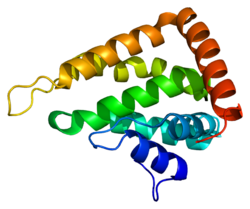| EPN1 | |||||||||||||||||||||||||||||||||||||||||||||||||||
|---|---|---|---|---|---|---|---|---|---|---|---|---|---|---|---|---|---|---|---|---|---|---|---|---|---|---|---|---|---|---|---|---|---|---|---|---|---|---|---|---|---|---|---|---|---|---|---|---|---|---|---|
 | |||||||||||||||||||||||||||||||||||||||||||||||||||
| |||||||||||||||||||||||||||||||||||||||||||||||||||
| Identifiers | |||||||||||||||||||||||||||||||||||||||||||||||||||
| Aliases | EPN1 , epsin 1 | ||||||||||||||||||||||||||||||||||||||||||||||||||
| External IDs | OMIM: 607262; MGI: 1333763; HomoloGene: 32172; GeneCards: EPN1; OMA:EPN1 - orthologs | ||||||||||||||||||||||||||||||||||||||||||||||||||
| |||||||||||||||||||||||||||||||||||||||||||||||||||
| |||||||||||||||||||||||||||||||||||||||||||||||||||
| |||||||||||||||||||||||||||||||||||||||||||||||||||
| |||||||||||||||||||||||||||||||||||||||||||||||||||
| |||||||||||||||||||||||||||||||||||||||||||||||||||
| Wikidata | |||||||||||||||||||||||||||||||||||||||||||||||||||
| |||||||||||||||||||||||||||||||||||||||||||||||||||
Epsin-1 is a protein that in humans is encoded by the EPN1 gene. [5] [6] [7]
Contents
EPN1 is an endocytic accessory protein that interacts with EPS15 (MIM 600051), the alpha subunit of the clathrin adaptor AP2 (AP2A1; MIM 601026), and clathrin (see MIM 118960), as well as with other accessory proteins for the endocytosis of clathrin-coated vesicles.[supplied by OMIM] [7]







